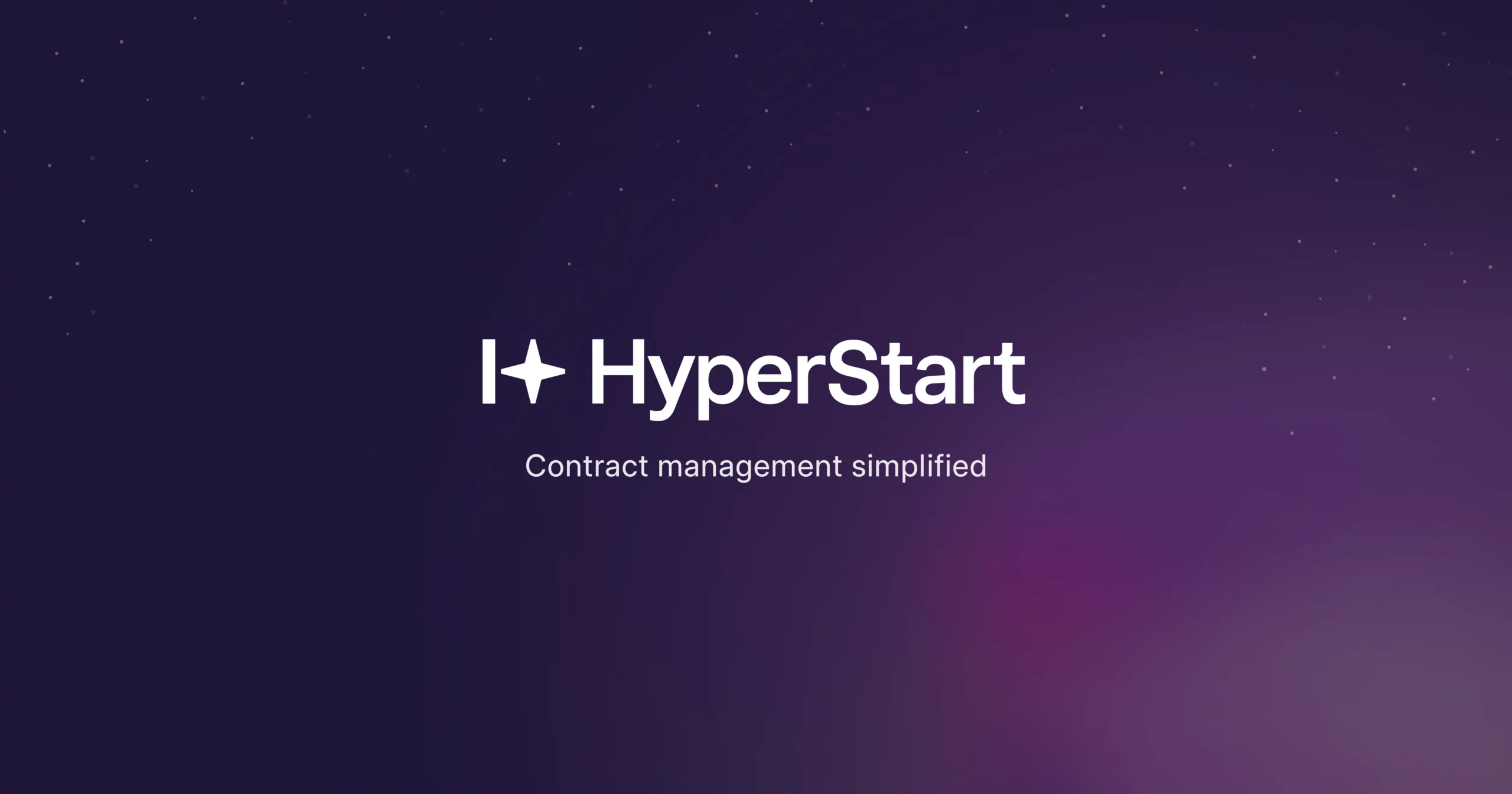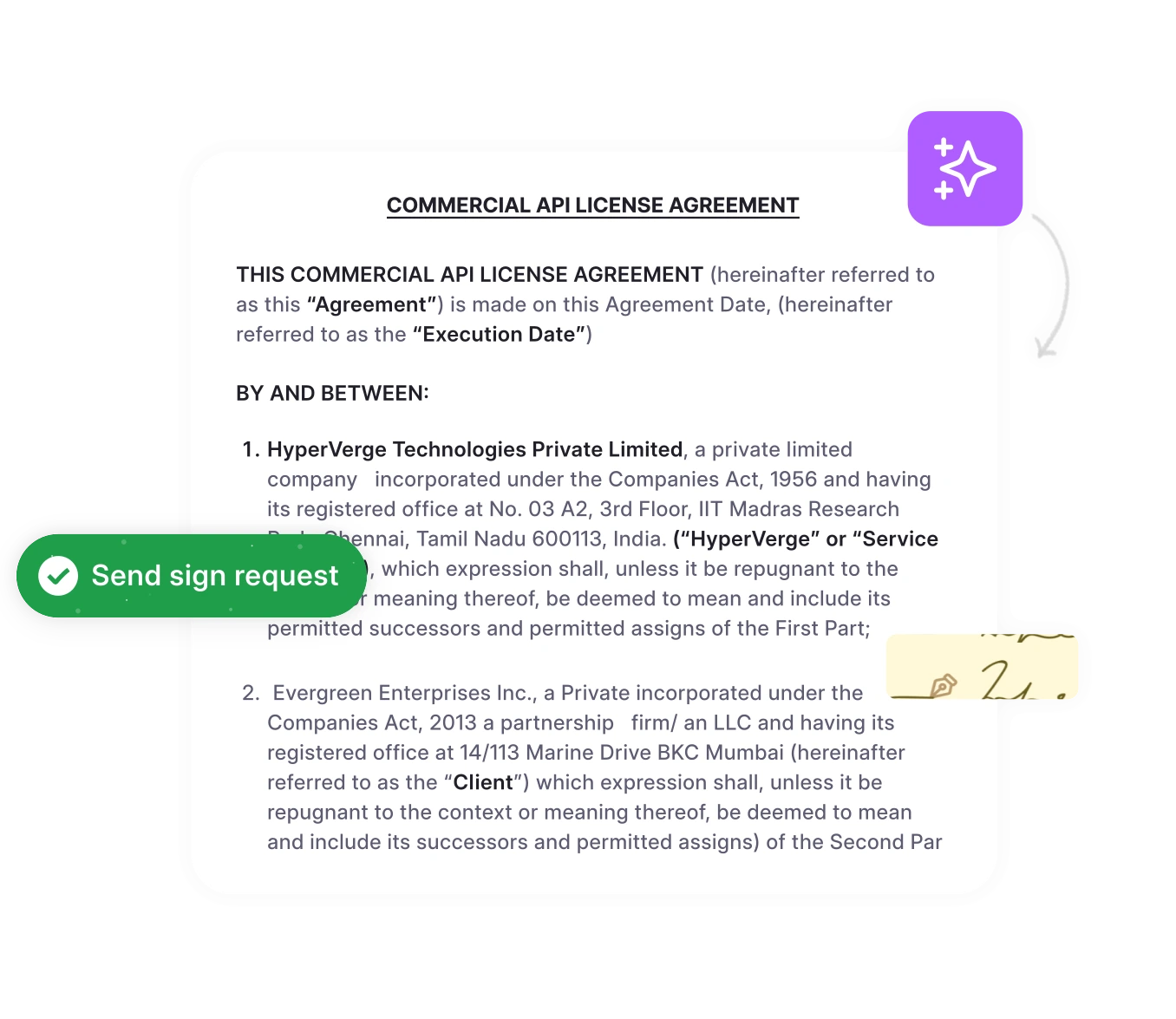A bilateral contract is a legally binding agreement in which both parties exchange promises and obligations, forming the foundation of enforceable business relationships. Unlike unilateral contracts, which bind only one party upon performance, bilateral agreements create immediate legal responsibilities for all involved.
These contracts are widely used in enterprise operations, including employment agreements, commercial transactions, technology licensing, and real estate deals. Mismanagement of bilateral agreements can result in missed deadlines, compliance issues, and delayed business transactions. Legal teams are increasingly leveraging AI-powered contract management.
As the U.S. Department of Justice explains, understanding the legal principles behind enforceable contracts is critical to avoiding disputes. In the context of bilateral contracts, this means ensuring that mutual promises, consideration, and clear terms are properly documented and monitored throughout the contract lifecycle.
Let’s start with a bilateral contract.
What are Bilateral Contracts?
A bilateral contract is a legally binding agreement where both parties exchange mutual promises and obligations. Unlike unilateral contracts, where only one party makes commitments, bilateral agreements create reciprocal duties for both parties.
Bilateral contracts require four essential elements: an offer, acceptance, consideration (the value exchanged by both parties), and mutual intent. The contract becomes legally enforceable upon mutual assent, prior to either party commencing performance.
Legal Implications for Contract Management
From a legal perspective established in contract jurisprudence, bilateral contracts are characterized by mutual promises that create reciprocal obligations. The key distinction is that bilateral agreements become binding upon mutual assent, not upon completion of performance.
For legal teams, this creates immediate legal responsibilities. Contract drafting must clearly define obligations, timelines, and remedies. AI-powered contract review software identifies missing elements or ambiguous terms affecting enforceability.
Key Characteristics of Enforceable Bilateral Agreements
Understanding these characteristics helps legal teams draft enforceable agreements and identify potential issues:
Mutual Promises and Reciprocal Obligations
Both parties commit to specific actions. Employment contracts exemplify this—employers promise compensation, while employees promise to provide services in return.
Consideration from Both Sides
Each party provides legal value, such as money, services, goods, or promises. Consideration must be bargained for, not merely gifted.
Legal Capacity and Authority
All parties require legal capacity and proper corporate authority. Legal teams must verify signatory authority.
Genuine Assent and Clear Terms
Both parties must genuinely agree without fraud or duress. Ambiguous language can void agreements or create litigation risk.
Never Miss Another Contract Deadline
Track every renewal date, performance milestone, and mutual obligation automatically.
Book a DemoWhat’s the Difference Between Bilateral and Unilateral Contracts?
Understanding the difference between bilateral and unilateral contracts is essential for legal teams managing diverse portfolios.
The choice between contract types affects legal obligations, enforceability timing, risk allocation, and business relationship management. Misclassifying contracts can lead to enforceability issues and unexpected legal exposure.
Key Legal and Business Distinctions
This comparison reveals critical differences affecting contract strategy:
| Aspect | Bilateral Contract | Unilateral Contract |
| Promises Required | Both parties make promises | Only one party promises |
| When Binding | Upon mutual agreement | Upon performance completion |
| Revocation | Cannot revoke after acceptance | Can revoke before performance |
| Examples | Employment, sales, partnerships | Rewards, insurance claims |
Enterprise Use Cases: When to Choose Each Contract Type
Legal teams should consider these factors when advising on contract structure:
Choose Bilateral Contracts When:
- Both parties have ongoing, interdependent obligations
- You need immediate enforceability and mutual commitment
- The relationship involves complex performance standards
- Risk should be shared between parties
- Long-term business relationships require reciprocal duties
Choose Unilateral Contracts When:
- You want to incentivize specific actions without guaranteed outcomes
- Only one party needs a legal obligation initially
- You need flexibility to modify or revoke offers
- Performance is conditional or optional
- Creating reward/incentive programs
Strategic Legal Considerations
Bilateral Contract Example: Software licensing agreements create mutual ongoing obligations—vendors must provide software updates and support, while customers must pay fees and comply with usage restrictions. Both parties can enforce contract terms if the other breaches.
Unilateral Contract Example: Employee referral bonus programs obligate only the company to pay if hires are successful. Employees have no obligation to make referrals, and companies retain the flexibility to modify programs.
3 Common Bilateral Contract Types in Enterprise Operations
Legal teams regularly encounter bilateral contracts across all business functions. Understanding industry-specific applications, common risks, and management challenges helps optimize contract templates, streamline approval workflows, and identify potential issues before they become disputes.
1. Employment and HR Bilateral Agreements
HR contract management software focuses on bilateral employment contracts, establishing mutual obligations between employers and employees. These agreements require a careful balance between business protection and legal compliance across multiple jurisdictions.
Key Examples include:
- Executive Employment Agreements: Complex compensation structures, performance metrics, termination clauses, and change-of-control provisions
- Non-Compete Agreements: Employee promises non-competition, employer provides consideration(enforceability varies by state)
- Confidentiality Agreements: Mutual information protection promises with specific scope definitions
- Retention Agreements: Employee commits to stay for a specified period, and the employer provides a retention bonus
Key Legal Considerations: Employment bilateral contracts must comply with local labor laws, wage requirements, and enforceability standards that vary significantly by jurisdiction.
Legal teams managing bilateral contract templates must ensure that enforceability standards align with the local jurisdiction’s requirements.
2. Commercial and Sales Bilateral Contracts
Commercial agreements drive revenue operations and require precise performance specifications to avoid disputes.
Key Commercial Examples:
- Purchase Agreements: Buyer promises payment, seller promises delivery with warranty obligations
- Service Level Agreements: Provider promises specific performance metrics, customer promises payment and cooperation
- Distribution Agreements: Distributor promises sales efforts and territory compliance, manufacturer promises supply and marketing support
- Partnership Agreements: Multiple mutual contract obligations for shared ventures, risk allocation, and profit distribution
3. Real Estate and Technology Bilateral Contracts
Real Estate Contracts: Commercial leases create ongoing mutual obligations, where tenants commit to paying rent and maintaining the property, while landlords provide occupancy rights and maintain the property. Purchase agreements involve complex bilateral obligations that require extensive due diligence and title protection.Technology Contracts Software licensing, SaaS agreements, and development projects involve sophisticated mutual obligations around:
- IP ownership and usage rights
- Performance standards and technical support
- Data protection and compliance certifications
Customer Success: “Qapita’s legal team processes complex licensing agreements 80% faster using AI metadata extraction—bilateral obligations are automatically identified and tracked.”
Track Every Contract Milestone
Automatically monitor obligations, renewals, and performance dates with proactive alerts—keeping your legal and business teams on schedule and reducing risk.
Book a DemoBilateral Contract Enforceability: Legal Requirements and Risk Prevention
Creating legally binding contracts requires attention to essential legal elements and proactive risk mitigation. Unenforceable bilateral contracts expose organizations to business disruption, financial loss, and compliance failures that could have been prevented through proper drafting and documentation.
Legal Requirements for Enforceable Bilateral Agreements
- IP ownership and usage rights
- Performance standards and technical support
- Data protection and compliance certifications
Common Legal Pitfalls and Prevention Strategies
1. Ambiguous Performance Obligations
Replace vague language with specific metrics. Instead of “timely delivery,” specify “delivery within 30 business days of order confirmation.” Measurable standards reduce litigation risk and enable performance monitoring.
2. Inadequate Consideration Documentation
Clearly document what each party provides in exchange. Promises without corresponding consideration are unenforceable, regardless of whether they are supported by signatures or have a particular intent.
3. Jurisdiction and Governing Law Issues
Multi-state or international contracts require explicit governing law and dispute resolution clauses. Different jurisdictions have varying contract principles affecting enforceability, damage calculations, and available remedies. This distinction between bilateral contracts and unilateral contracts becomes crucial in enforcement actions and damage calculations.
Companies using strategic settlements in tech/IP disputes report that global agreements—like Apple and Qualcomm’s 2019 settlement—ended parallel litigation worldwide, secured multi-year license and supply contracts, and reshaped cross-border supply chains.
Read →
4. Compliance and Documentation Requirements
Maintain comprehensive records of negotiation processes, authority verification, and contract modifications. Modern legal teams use automated audit trails to support enforceability during disputes or compliance reviews.
5. AI Advantage
HyperStart’s AI contract review identifies potential enforceability issues during drafting, not during disputes, helping legal teams prevent problems before they occur.
While understanding legal requirements is essential, many organizations struggle with the practical realities of managing bilateral contracts at scale. Even legally sound agreements become business liabilities when operational processes fail.
What Challenges do Legal Teams Face with Bilateral Contract Management?
Legal teams face mounting pressure in managing the increasing volume of contracts while maintaining rigorous legal standards. Most spend more time on administration instead of strategic legal counsel—a crisis that affects both the career development of legal professionals and the organizational business velocity.
This productivity crisis stems from outdated processes that don’t scale with business growth. When contract volume doubles but legal team size remains constant, manual processes break down, creating bottlenecks that ripple throughout the organization.
Common Bilateral Contract Management Problems
These widespread issues create operational inefficiencies and legal risks:
1. Scattered Contract Storage Across Systems
Bilateral agreements are often stored in email attachments, shared drives, individual computers, and physical filing cabinets. When business teams need contract information for strategic decisions, legal teams spend hours hunting documents across multiple systems. This fragmentation creates delays in decision-making and compliance blind spots.
2. Manual Obligation Tracking in Spreadsheets
Complex bilateral contracts contain dozens of mutual obligations, including payment schedules, performance milestones, reporting requirements, and renewal notice periods. Legal teams often resort to Excel spreadsheets for tracking, creating error-prone processes that struggle to handle contract portfolio growth or team transitions.
3. Missed Renewal Deadlines and Financial Impact
Bilateral contracts often contain automatic renewal clauses with specific notice periods. Missing these deadlines costs organizations over $ 200,000 annually through unfavorable automatic renewals, termination penalties, or emergency contract extensions at premium rates.
4. Version Control Chaos During Negotiations
Email-based contract negotiations create confusion about current versions, approved changes, and outstanding issues. Multiple stakeholders working from different versions extend negotiation timelines and increase the risk of errors.
Business Impact on Organizations
Deal Velocity and Revenue Recognition: Contract approval bottlenecks delay 40% of business deals, directly impacting revenue recognition and competitive positioning. Contract management best practices can eliminate these delays and accelerate business processes.
Compliance Risk and Audit Exposure: Scattered contracts create audit gaps, making it impossible to demonstrate compliance with contractual obligations or regulatory requirements quickly. This exposure leads to costly audit remediation and potential legal liability.
Legal Team Career Impact: Administrative burden reduces job satisfaction, limits strategic legal work opportunities, and drives talent retention challenges. Legal professionals leave organizations where they function as expensive contract administrators rather than strategic advisors.
Organize Scattered Contracts
HyperStart’s AI-powered repository centralizes all contracts with instant search and automated obligation tracking—so legal teams focus on strategy, not administration.
Book a DemoWhat are the Best Practices for Bilateral Contract Management?
Modern legal teams transform contract management from an administrative burden to a strategic advantage through systematic processes, AI-powered automation, and integrated business workflows. These practices enable legal professionals to focus on high-value legal analysis while ensuring comprehensive contract governance.
1. Centralized Repository and AI-Powered Search
Consolidate all bilateral contracts into a centralized contract repository supporting complete contract lifecycle management and providing immediate access to current versions, historical documents, and related correspondence.
This eliminates time wasted searching multiple systems and ensures stakeholders work from identical contract versions.
AI-Powered Discovery
Modern repositories enable instant discovery of contracts and clauses across entire portfolios. AI understands legal context and variations in terminology, identifying relevant provisions even when the exact language differs between agreements. Legal teams can instantly locate all contracts containing specific clauses or obligations.
Automated Metadata
AI systems automatically extract key contract data, including parties, effective dates, financial terms, renewal dates, and governing law. It then creates searchable metadata without manual data entry. This enables powerful filtering and reporting capabilities for legal operations analytics.
2. Automated Obligation and Renewal Management
Automated contract tracking monitors bilateral contract obligations, deadlines, and performance milestones. AI systems automatically identify key dates from contract language and create proactive alerts for legal teams and business stakeholders.
Proactive Deadline Management
Automated renewal management prevents costly missed deadlines by tracking renewal notice periods, option deadlines, and contract termination dates across entire portfolios. Advanced systems provide escalating alerts and integrate with calendar systems.
Business System Integration
Real-time contract status visibility in CRM systems eliminates manual updates and ensures accurate business reporting. Contract data flows automatically to sales forecasting, financial planning, and operational systems.
Standardized Bilateral Contract Templates
Develop pre-approved bilateral contract templates for common agreement types, such as employment, vendor, licensing, and service contracts. Template standardization reduces drafting time, ensures legal compliance, and enables faster business closure while maintaining legal rigor.
LeadSquared’s legal team evaluated 22 CLM parameters. HyperStart was the only platform meeting all SOC 2 compliance and legal operations requirements.
Read →
3. Enterprise Compliance and Audit Readiness
Maintain comprehensive audit trails for all contract activities—creation, negotiation, approval, execution, amendments, and performance monitoring. Automated logging captures user access, document changes, and approval workflows, supporting both internal compliance requirements and external dispute resolution.
Advanced systems offer role-based access controls, ensuring that only authorized personnel can view, edit, or approve specific contract types, while maintaining detailed activity logs for security and compliance purposes.
Enterprise Implementation: ROI and Transformation
Legal teams adopting AI-powered contract management can achieve measurable productivity gains and create strategic value. Success depends on understanding ROI potential, managing organizational change effectively, and positioning technology as an enhancement to legal expertise rather than a replacement.
Industry research by World Commerce & Contracting (WorldCC) highlights the areas most commonly tracked to measure contract management success:
Top 5 Most Measured Areas:
- Cost reductions achieved
- Compliance with standards and scorecards set by business units or trading partners
- Cycle times for process phases (e.g., bid-to-contract, purchase-to-pay) and for managing changes or disputes
- Contribution to revenue or margin improvements
- Customer satisfaction (external stakeholders)
Bottom 5 Least Measured Areas:
- Salary benchmarks compared with external companies
- Supplier satisfaction
- Skills benchmarking and improvement tracking
- Performance comparisons with similar teams in other organizations
- The frequency with which specific terms are negotiated or rejected by the counterparty
This data highlights that while organizations focus heavily on cost, compliance, cycle times, and customer outcomes, softer metrics such as skill development, supplier satisfaction, and negotiation nuances often receive less attention.
Change Management for Legal Professionals
Successful contract lifecycle management implementation requires strategic change management:
Customer Success
“Qapita’s implementation was seamless. Smart contract import migrated all bilateral agreements within minutes. AI metadata extraction was immediately visible and impressive.”
Measuring Success and Continuous Improvement
Track implementation success through both productivity metrics and legal team satisfaction measures. Monitor contract processing times, error reduction, compliance improvements, and professional development opportunities enabled by administrative burden reduction.
Future-Proof Your Contract Operations with HyperStart
Transform your bilateral contract management with HyperStart – an AI-powered CLM platform that turns manual, time-consuming processes into a strategic advantage. HyperStart automates obligation tracking, renewal alerts, and version control, enabling legal teams to focus on high-value, strategic work.
Stay ahead of deadlines, ensure compliance, and gain real-time visibility into all agreements—future-proofing your contract operations and driving scalable growth with HyperStart.










